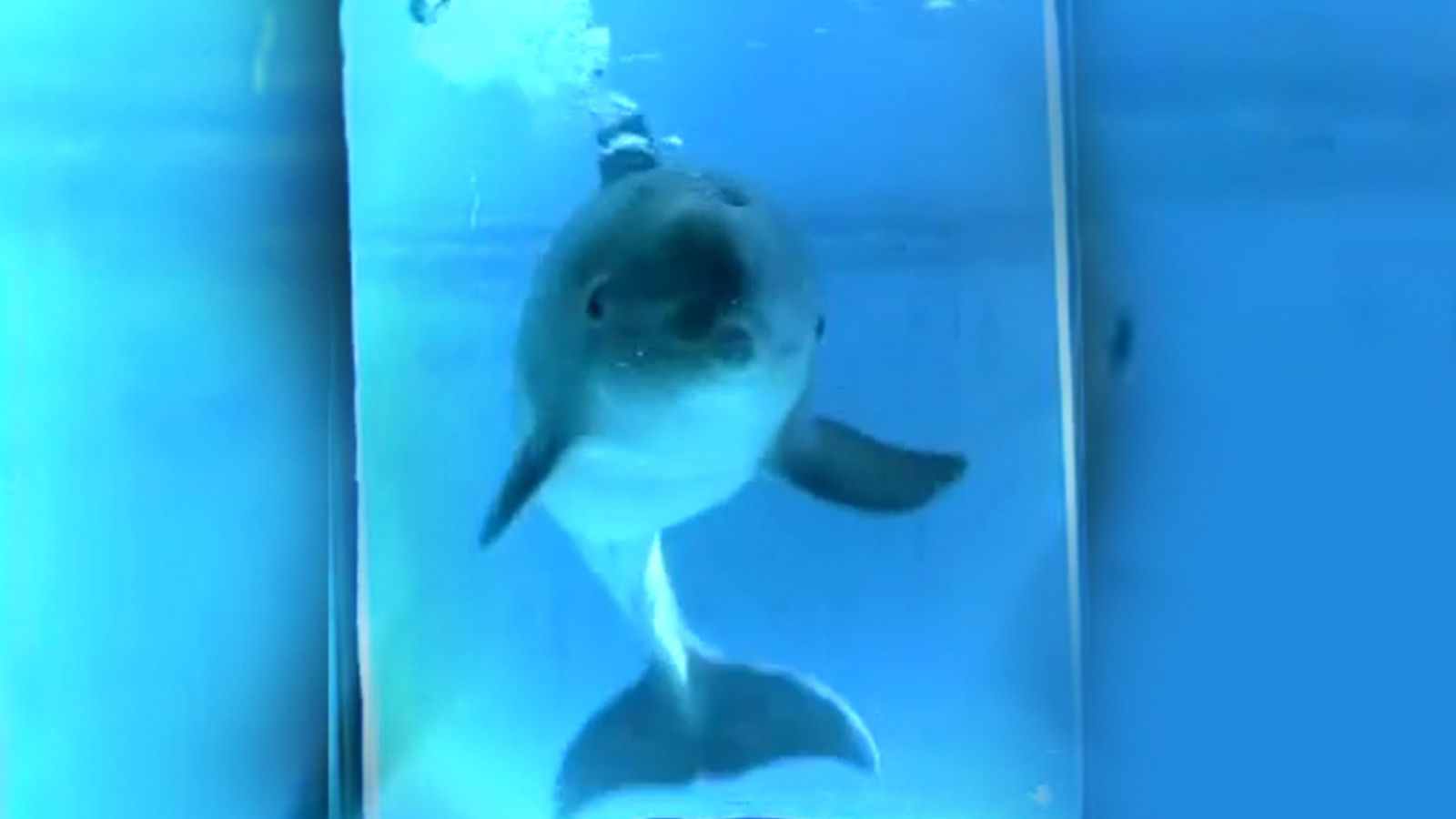Bottlenose dolphins (Tursiops truncatus) show the capacity for mirror self-recognition (MSR), an indicator of self-awareness, at an earlier age than humans and chimpanzees, as reported in a new study in PLOS ONE. According to co-authors on the study, Diana Reiss, professor at Hunter College of the City University of New York and Rachel Morrison, assistant professor at the University of North Carolina at Pembroke, dolphins are one of a few species that show the capacity for MSR, along with humans, great apes, elephants, and magpies.
The new study entitled “Precocious Development of Self-awareness in Dolphins,” examined the age at which young dolphins first show this ability as indicated by their behavioral responses towards a mirror. Dr. Reiss and a prior colleague previously demonstrated the capacity for MSR in adult dolphins, but this is the first developmental study conducted with young dolphins during their first years of life. The findings shed new light about their path to self-awareness and the similarities they share with humans.
Previous research has found that humans first show self-directed behavior at a mirror between 12-15 months of age and pass the mark test between 18-24 months of age; chimpanzees have been observed to exhibit MSR behaviors later in development. The emergence of MSR in children has been correlated with sensorimotor development and growing social and self-awareness. Dolphins show advanced sensorimotor and social awareness during the first weeks of life and this inspired the authors of this study to investigate whether dolphins, likewise, might also show MSR at an early age as well.
Morrison and Reiss tracked the behavior of two young bottlenose dolphins at the National Aquarium in Baltimore, Maryland as they interacted with their own mirror image over the course of a three-year- study. The study’s authors observed and categorized the dolphins’ behaviors at the mirror and found that one dolphin exhibited self-directed behaviors, indicative of mirror self-recognition, as young as seven months of age. “The early emergence of this level of self-awareness coincides with the dolphins’ precocious development of social awareness and advanced sensorimotor skills,” said Morrison.
Reiss stated, “The findings, in this first study on the age of emergence of this level of self-awareness in dolphins, add new layers to our understanding of factors that may contribute to the capacity for MSR across species and the evolution of intelligence in the animal world.”
PLOS ONE, the online publication publishing the study, is the world’s first multidisciplinary open access online science journal, now in its eleventh year. Professor Morrison, who is lead author on the paper, was a doctoral student in Professor Reiss’s lab at the time of the study. She has since become a professor herself.


